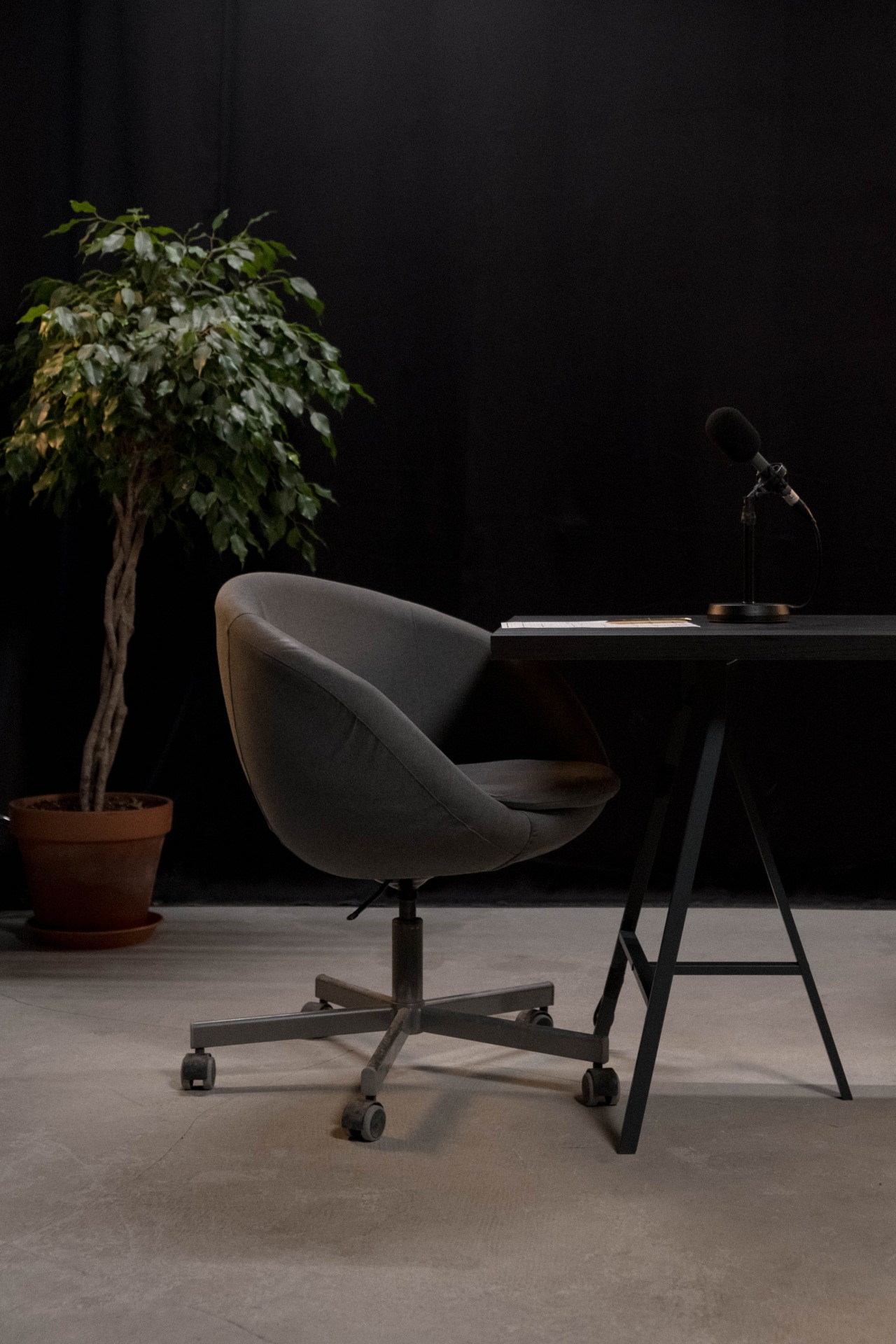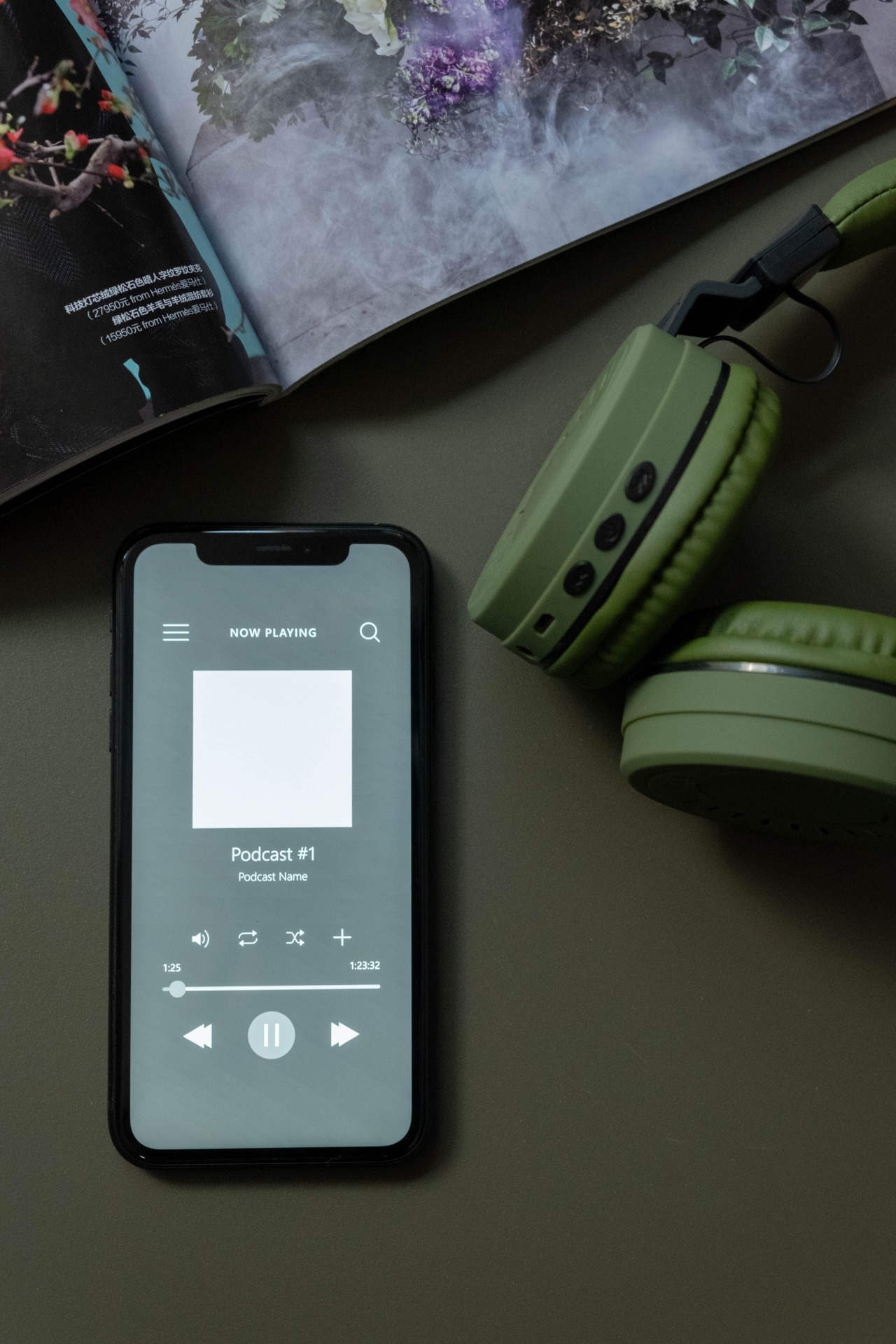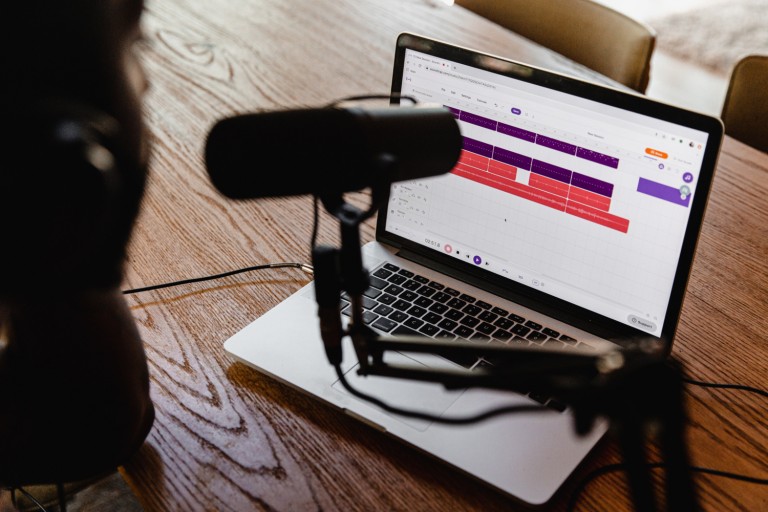Podcasting is huge, with brands from all sectors getting in on the act. It’s also a popular channel for solo creators too.
The great thing about podcasting is that you can get started with relatively few pieces of kit. Great if you’re on a budget and need to bootstrap. You can get by with a good laptop and microphone. An external microphone can be used or look here to troubleshoot any issues with your Mac internal microphone.
The type of podcast you’re producing will also have a bearing on the types of equipment you need. Will you have a guest on the podcast? If so, will they be in the same space with you or in a different location?
If you’re wanting to step up your podcasting game and produce professional, high-quality material, then you’ll need to invest in some equipment to round out your podcasting studio.


A podcasting space
The setting for your podcast can have a huge effect on its quality. That’s why many companies choose to hire our podcast studios or build their own internally if they have the budget.
Now, a dedicated podcast studio isn’t on the cards for most people, but there are some things you can do to create a space within your home or office. This includes using a quiet space away from any office or traffic noise.
Soundproofing can be helpful, but if this isn’t possible then use a room without any echoes. You can buy special baffling to but in a room to absorb noise and reduce echoes.
Laptop or Desktop Computer
The nerve centre of your podcast. Your computer will be capturing every element of your podcast, from the audio to the editing and publishing. While you don’t need a top of the line laptop, you do need one that’s decent spec and reliable.
Microphone
A specialist microphone is necessary to get great sound and to cut out any excess background noise. For the highest quality, you will need external microphones. Many use USB but if you’re having multiple speakers on the podcast then opt for XLR microphones.
Microphone Pop Filters
A pop filter is that circle of fabric you often see in front of microphones. It is designed to prevent any harsh sounds from reaching the microphone. This is usually from people talking loudly or exaggerating certain letters when talking.
Shock mount
Today’s microphones are so sensitive, they can pick up even the slightest sound, or translate certain movements into sound elements. For example, if you are typing while you are podcasting, you accidentally bump the table or bang your hand on something, then these vibrations will be transmitted through the mic. A shock mount for your microphone acts to absorb these vibrations before they reach your microphone.
Headphones
A great pair of headphones is a must. While your earbuds may be used initially, you really need a closed-back headphones to stop any sounds being picked up by your microphone. There are many great brands of headphones that will suit all budgets.
Digital Audio Recorder
Not all of your recordings are generated inside your podcast studio. At times, you may need to talk to someone in a different location for an interview or attend an event. Rather than rely on your phone, a good digital audio recorder with enough storage is needed. You can find some models that plug into your smartphone, so you can use the storage and recording capabilities on that, but with a better sound recording quality.
Recording & Editing software
Deciding what software you’ll use to record and knit all the elements of your podcast together is important. Try playing around with a few free trials to see which ones you have the most affinity with. Adobe Audition is very popular but there are many more out there that you can try, for a cheaper price too.
When recording, it might be tempting to record your audio on tools like Teams or Zoom, you won’t get the same audio control that you do with specialist tools, and it could massively affect the quality of your podcast. Try software such as Squadcast or Audacity.
Takeaways
Producing a podcast doesn’t have to be overly complicated, but you do have to understand how the various elements work and choose your equipment accordingly. Poor setup and tech will be almost impossible to hide in the editing phase and could actually damage your brand if you’re putting out amateur sounding material to your target audience.
–
This is a collaborative post and may contain affiliate links
Header Image: Soundtrap / Unsplash
